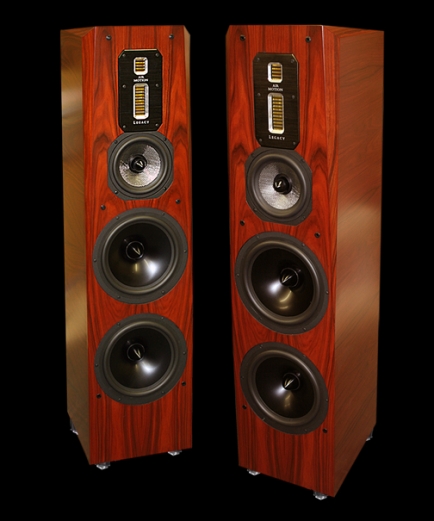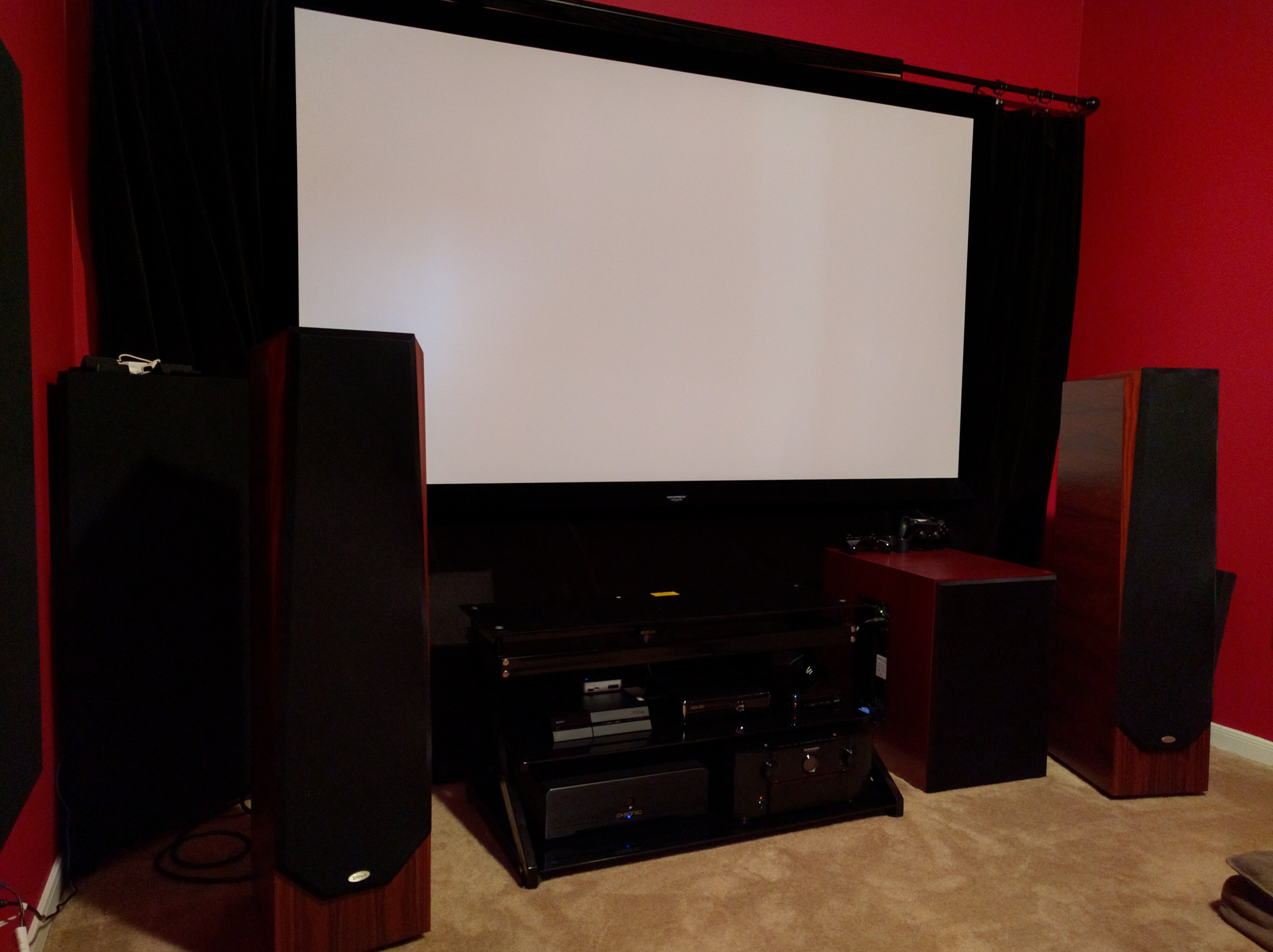Legacy Audio Signature SE
With stunning accuracy and holographic imaging, the Legacy Audio Signature SE speakers excel at immersive musical reproduction, though their lofty price and setup challenges limit broader appeal.
WE LIKE
WE DON'T LIKE
- Extremely natural and detailed mids
- Holographic soundstage and imaging
- Stunning craftsmanship and looks
- Can sound bright if poorly placed
- Quite large, almost 4ft (1.2m) tall
- Require high power amplification
WE LIKE
- Extremely natural and detailed mids
- Holographic soundstage and imaging
- Stunning craftsmanship and looks
WE DON'T LIKE
- Can sound bright if poorly placed
- Quite large, almost 4ft (1.2m) tall
- Require high power amplification
My love affair with Legacy Audio speakers began in 2012 when I had the opportunity to review the Signature SE’s bigger brother, the Focus SE, in my home. It was the first time I can recall that a speaker I reviewed so thoroughly captivated me. No content failed to impress with its incredible imaging, effortless dynamic range, and tonal purity, whether it was music or films.
Unfortunately, I had to send the Focus SEs back to Legacy because I couldn’t afford to keep them, yet I never forgot how much I enjoyed them. To this day, they remain a benchmark in my memory for how much a speaker can enhance and enable the enjoyment of music and movies.
Before I get into the meat of the review, I’ll provide a bit of background on Legacy Audio for those who haven’t heard of them. Founded in 1983 in Springfield, IL, by Bill Dudleston, Legacy Audio is, first and foremost a manufacturer of audio and home theater equipment. Dudleston is both the President and Chief Designer at Legacy Audio, where he has developed many proprietary technologies during his tenure. Bill graduated from the University of Illinois as a Chemical Engineer and has a strong background in fluid dynamics, which he applies to designing both transducers and speaker enclosures.
Much of that may seem irrelevant at first blush; however, one of Legacy Audio’s secret weapons is their array of proprietary transducers, including their Dual Air Motion Tweeter and Midrange as well as their 7” Silver/Graphite mid-woofer driver. I’ll discuss these in greater detail below. For now, let’s get back to the review.
Earlier this year, I was on the Legacy website when I noticed a new product, the Legacy Audio Signature SE. It appeared to be a slightly smaller version of the Focus SE with the same Dual Air Motion midrange/tweeter array, as well as the same 7” mid-woofer drivers. Needless to say, my interest was immediately piqued. I contacted Legacy and was informed that a review would be possible. A few short weeks later, a pair of Signature SEs arrived on a pallet in my driveway, ready for installation.

Packaging, Fit & Finish
The Signature SEs arrived in sturdy carton boxes secured to a pallet. The boxes are double-layered cardboard, while the speakers are packaged in a velvet bag to protect the veneer, followed by high-density foam and a large plastic bag to keep moisture out. First-class packaging that would protect the product from almost anything.
Unpacking the SEs was surprisingly easy, as the bag allows the speaker to slide out of the box sideways in a standing position. From that point, it’s a simple matter of removing the plastic, foam, and then velvet before gently maneuvering the speakers into position. Upon removal of the velvet, I was greeted with beautiful rosewood veneer, finished to perfection, as one would expect from a company that prides itself on craftsmanship.
The speakers are beautiful, if a little larger than one might guess from the website. Weighing in at 106 lbs per speaker and measuring 4 feet tall, these are not diminutive by any definition, though compared to the Focus SE, they fit much more easily into your average home theater or living room.
Set Up & Calibration
As with most speakers in my home theater, the happy place for the Legacy Audio Signature SEs was roughly 4 feet from the back wall and 3 from the side with about 2 inches of toe in. I typically play back a recording I know very well during setup and slide the speakers sideways and adjust toe-in until the image snaps into focus.
From that point, I adjust positioning relative to the back wall until bass frequencies lose their muddiness and blend well with the rest of the system. All told this process takes about an hour, and with the Signature SEs, I was able to cut that in half, thanks to my memories of where the Focus SEs had sat.
For those who are limited to a placement closer to boundaries, the Signature SE provides a rear panel bass damping control which can reduce energy in the 60-100 Hz range by 2dB. This is specifically designed to prevent muddiness in the upper bass. A similar control is also found on the Focus SE, allowing the speaker to be used in smaller rooms.
Once the initial positioning had been refined, I pulled out my trusty Audyssey Pro kit and ran a full calibration. The process itself is not painful, though getting the required silence out of my dogs can sometimes be maddening. Satisfied with the calibration, I set up my Marantz AV8801 to run film content on the Blu-ray input with Audyssey engaged while disabling it for the Left&Right speakers during music playback.
Impressions
I’ve lived with the Signature SEs for the past couple of months now and have managed to throw almost everything at them during that time.
Here are the highlights:
Music
Since I had the opportunity to do so, I spent a couple of extended listening sessions with my favorite concert Blu-ray disc before moving on to two-channel recordings. The Eagles: Farewell Live From Melbourne (2005) [Blu-ray]
This is one of the best concert discs in my collection for several reasons, not the least of which is The Eagles’ incredible performance during the recording. Another great reason is that the disc includes both a 5.1 DTS-HD MA lossless audio track and a 2.0 LPCM track, which allows a great evaluation of subwoofer integration and bass performance in stereo mode.
I Can’t Tell You Why was beautiful through the SEs, with the vocals just where you’d expect them to be, front and center, while the low end had serious heft. The attack as individual guitar strings were plucked was exceptionally realistic through the SEs, and before I knew it – the track was over.
Switching from the 5.1 to the stereo track, I immediately noticed a reduction in the bass, but not a significant one. Throwing my processor into the pass-through mode, the dual 10” woofers on the SEs managed to produce substantial tight low-end content while the vocal image moved further forward. Swapping out amps also demonstrated that my Wyred4Sound MMC-7 was not able to control the bottom end on the SEs nearly as well as the D-Sonic amplifier I am currently reviewing (which has significantly more power to handle transients).
2-Channel Listening
I spent time listening to several of my favorite albums on the Legacy Audio Signature SEs, none of which disappointed me in the slightest. Mickey Hart’s Global Drum Project was absurdly enjoyable through the Signature SEs with a ton of slam thanks to the dual 10” woofers and a great deal of texture and detail in the upper bass and mid-range thanks to the superbly impressive 7” silver/graphite mid-woofer.
Acoustic Alchemy’s Playing for Time (one of my all-time favorite tracks) is just delicious through these speakers, with tons of detail and realism that I don’t get with my Paradigm Studio 100 v.5’s. I attribute some of this to the dual Air Motion Tweeter (AMT), which delivers some of the clearest and least fatiguing upper octaves I’ve ever heard.
This is the exact same transducer that is in the Focus SE, the Whisper XDS, and even their top-of-the-line V system, and it elevates the performance of this speaker to a level that is very hard to match at this price point or even several tiers higher.
 The Signature SE Air Motion Tweeter
The Signature SE Air Motion TweeterDuring the review, I sampled tracks from every genre imaginable, including classical, electronic, and even a great deal of metal. No matter the content, I could not escape the impression that the music I heard through the Signature SEs was ultimately more engaging and interesting than I had ever heard it before.
Irrespective of the genre that I chose to listen to, the Signature SEs owned the music the way that only the best speakers can. Given sufficient amplification, the SEs are truly effortless from the lowest octaves to the highest.
Movies & TV
My favorite cinematic mixes of the past couple of years have one thing in common, fantastic dynamic range. Among these titles, two of my favorites are 2013’s Gravity (the recent Atmos re-release) and the very recent release of The Man From U.N.C.L.E – ironically another Atmos title.
The mix in Gravity is full of massive pans and shooting projectiles, elements that depend on a very wide and deep sound stage with great imaging to ensure that the transition to the surrounds is seamless.
With the Legacy Audio Signature SEs, this was absolutely the case. The debris sequence at the beginning of the film is a truly worthy demo for any home theater system, and with the Signature SEs, I heard more detail and felt more immersed than I had ever before.
The AMT really has a way of bringing out micro-detail in a way that is difficult to explain. Through the SEs, I found myself noticing much more of the environmental noise that was previously lost in the mix, and this only served to deepen my immersion in the film.
With The Man From U.N.C.L.E, you get a fantastic variety of music and a truly outstanding mix with a great deal of action, dialogue, and variety. This is one of the few titles I’ve heard at home that really outshone what I heard theatrically in every way.
The Signature SE’s reproduction of the stereo-focused music in the soundtrack was absolutely flawless, eliciting several comments from our guests over watching the film with us.
Closing Thoughts
I’m sure many of you think that this is an overwhelmingly positive review. However, there is a reason. I can find no glaring sonic faults with the Signature SEs when properly set up. Going further, it’s very difficult to find something they don’t do superbly well. Most speakers have a sonic Achilles heel, a weakness that allows the listener to subtract points.
If the Signature SEs do have such a flaw, it is in their tendency to sound a tad bright or fatiguing when not properly dialed in, a flaw that I suspect most of Legacy Audio’s lower-end speakers share – and it is a result of the superbly executed AMT. This is a transducer that is inherently designed to be brutally honest and have a lot of output – making it much harder to mask high-frequency issues that are usually due to room acoustics or calibration tools.
Audyssey had a strong tendency in my room to bring this behavior forth with the Legacy Audio Signature SEs, and while not at all noticeable in film viewing, that is the reason I elected to disable Audyssey on my mains for music listening. Legacy has considered this in their design, noting that adjusting toe-in allows one to finesse treble balance somewhat, as does the rear panel treble switch, which can create a -2dB cut at 8kHz in the downward position. On the physical side, one also cannot avoid the conclusion that these are imposing speakers. They require a lot more real estate than many of their competitors – so those with small rooms or very large screens may need to plan carefully.
All this aside, at the end of the day, the reason that I choose to own a speaker is for the way it sounds once properly set up in my room. To paraphrase myself from my Focus SE review, one of the truest compliments you can give a speaker is that it transports you from the certain knowledge you are listening to a recording to forgetting you aren’t there experiencing whatever is on the screen in front of you.
With the Signature SEs in my theater, this didn’t happen only once. It happened again and again as my favorite recordings and films were transformed into experiences, and I found myself completely immersed. There’s no easy way to justify the price of an admittedly expensive piece of audio equipment like this in words. Instead, I’ll simply suggest you find a local dealer and let your ears decide.
In my case, the amount of money I have spent on this hobby has always been in the pursuit of immersion and enjoyment, elevating the joy I get from entertainment in all its forms. Legacy Audio’s Signature SEs deliver exactly that, and I strongly suggest an audition. Highly Recommended.
Post Disclaimer
Some of our content may contain marketing links, which means we will receive a commission for purchases made via those links. In our editorial content, these affiliate links appear automatically, and our editorial teams are not influenced by our affiliate partnerships. We work with several providers (currently Skimlinks and Amazon) to manage our affiliate relationships. You can find out more about their services by visiting their sites.





Similar threads
- Martin Dew
- Blu-ray and UHD
2- John Dirk
- Speakers & Subwoofers
2 Tags review subwoofer svs svs sb-4000